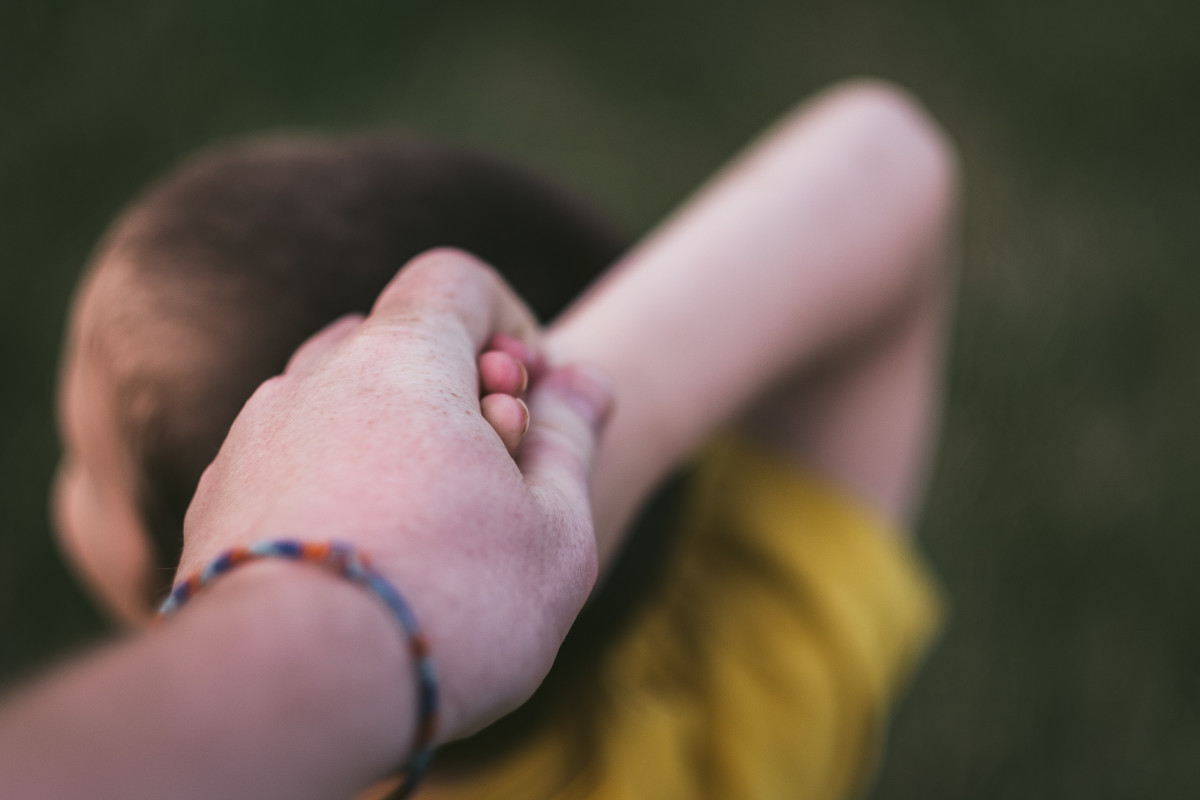
A carer for family members with myotonic dystrophy talks about the challenges of diagnosis and living with this rare disease

Impact of neuromuscular diseases on education and working opportunities of patients and carers
Nicky is a carer for six family members across three generations who have a diagnosis of myotonic dystrophy. Like many families, they had been living with the wide range of symptoms associated with the condition without anyone linking them together into a diagnosis. They were unaware of the disease until her grandson was born with the severe, congenital form. Even then, it took some years for them to receive a diagnosis. We talked to her recently to learn how her family got their diagnosis and the impact of the disease on their day-to-day life.
“I do not have the mutated gene and I’m free of the condition, which is a dominant inheritance via my husband. He has the condition, as do my adult children and all of my grandchildren, including one who has the severe congenital form”, told Nicky.
Their experience was similar to many families, who find that the multi-systemic nature of myotonic dystrophy can complicate and delay a diagnosis. “Just to put into perspective how difficult a diagnosis can be without the correct genetic test, we only received a diagnosis six years ago following the severe medical presentation of one of my grandchildren. Many incorrect family diagnoses were made on the way”.
The baby’s symptoms at birth included floppy baby, inability to feed, difficulty waking up, poor breathing and talipes (clubfoot). The family were unsure if the baby was going to survive and avoided choosing a name. Ironically, the doctors were less worried, despite a difficult birth and the severity of his symptoms. “The vulnerability of the mother and baby at birth was also missed by the medical professionals. Symptoms were not joined together and the mother was not offered any additional support. If anything, she was dismissed as being over anxious with the concerns that she had for her newborn baby. She also was unable to cope with the day-to-day life of looking after the rest of the family, due to her own illness and that of her child.”
Not having a diagnosis was stressful at times, as the family did not know how to manage or respond to the baby’s symptoms. “Once, while I was looking after my grandson, his head fell backwards and I was worried that I had damaged his neck or back. I spent years harbouring a deep concern that I had done something to impact his development”, said Nicky. It took a further two years to get a diagnosis, during which time they attended a multitude of clinics to check out each of the multi-systemic disorders. Then one doctor decided to run a test for myotonic dystrophy type 1. After her grandson received a diagnosis, the rest of the family were genetically tested for the disease.
A wide variety of symptoms
Nicky told us that the symptoms for each of her affected family members vary from day to day and between each of them. They vary in terms of the systems of the body affected by the disease and the level to which they are affected. Due to the anticipatory aspect of myotonic dystrophy, the younger members of the family are more severely affected and they experience a greater number of symptoms.
The systems of the body that can be affected by myotonic dystrophy include fatigue (manifesting in daytime sleeping), cognitive system (brain), immune system, respiratory system (breathing), hormones, reproductive system, muscle, skin, vision, cardiovascular and gastro-intestinal.
Readjusting life
The family has had to readjust their expectations of life and reassess their priorities. Nicky told us she tries to ensure the health and safety of the family, whilst still giving them a good time. Her grandson, who was born with the congenital form, has an amazing sense of humour. He rocks with laughter but due to muscle weakness, it doesn’t show in his face. His fun personality still comes through though, and he is a real show-stealer. Doctors originally told them that he would never speak, but he is very charming, never stops talking and has an amazing vocabulary, even if he does not fully understand all the words. Like many young children, he sometimes chooses the most embarrassing moment to try out what he has learned!
Keeping it private
Nicky knows other families with myotonic dystrophy, but generally does not share information with them, as much of it is sensitive and specific to members of the family. She feels it is disloyal for her to discuss her family’s experience with others and she tries to respect their privacy.
We asked Nicky if she received enough information about myotonic dystrophy from healthcare professionals, or if she had to learn about the disease herself.
“We didn’t get enough information and some of the information we did get was incorrect, particularly in the light of current findings"
"Professionals are not always up to date with their information so we had to go and find out about it ourselves. There is a reluctance on the part of some professionals to acknowledge that is the situation, but others are anxious to learn and work in partnership with us”.
As myotonic dystrophy is inherited with a faulty gene from only one parent, it can affect a large number of people in a single family. As the only person in her family who does not have the condition, Nicky sometimes loses confidence in her own equilibrium and doubts her ability to manage family dynamics. “I fear for the present and for the future but I have nobody to share this with. Because there are so many people with the condition, it leaves the family very vulnerable. The kinds of long-term plans that you would usually make to help your family no longer apply”.
Lack of support
Nicky feels that she does not receive sufficient support in her role as a carer. The needs of people with myotonic dystrophy are highly complex and she is not sure who would be able to offer meaningful support.
Nicky has some positive advice for families who have just received a diagnosis of myotonic dystrophy or another rare disease.
“Continue to learn as much as you can. There is greater understanding now of rare diseases and a growing recognition that everybody has an entitlement to the best health and social care"
"Increasingly this is being recognised and boundaries and frontiers are being pushed. This makes it even more important that as somebody affected by the disease you take responsibility jointly with professionals to ensure you are aware of the most up to date clinical practice and current science available. Signing up to myotonic dystrophy registries and trials will help progress research which ultimately should result in improved care and hopefully a cure”.
How can Share4rare help families living with myotonic dystrophy?
We finally asked Nicky how Share4Rare could help families like hers. “Share4Rare offers advice and information on specific rare conditions. It also links together rare conditions, which do have aspects in common, but particularly it offers guidance on how to work together with professionals. It has the potential to unite individuals and families to enable them to share the emotional burden resulting from obtaining a rare disease diagnosis”.
The Share4Rare chapter on myotonic dystrophy is now available here.
Adult patients and carers living with myotonic dystrophy are eligible to participate in the upcoming Share4Rare neuromuscular pilot by registering for the Share4Rare platform. Register here to become part of the growing community.
